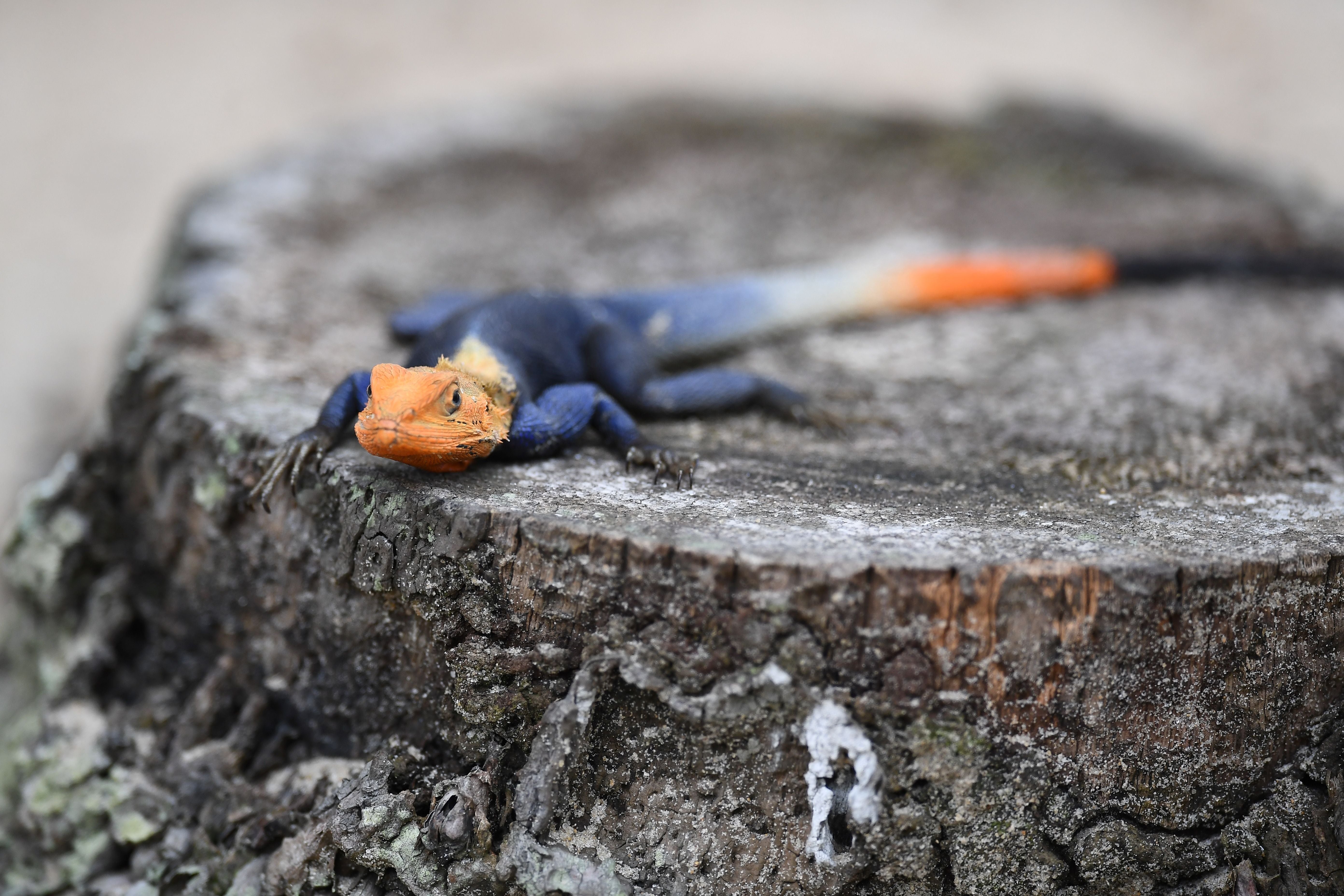Reptiles with bright red heads could be wreaking havoc in Florida, scientists warn
Experts express unease about impact of reptile on native species in south Florida area

Scientists are worried about a reptile potentially ruining the south Florida ecosystem they call home, as the lizards are not native and hard to control.
Known as the Peter’s rock agama, the reptiles are distinctive with males sporting bright red heads. Both sexes are fast and able to hide easily, and they are worrying people about their effect on the natural world as their presence as been growing in places like Martin County.
The University of Florida’s Ken Giolei said to Local 10, “The first reported acknowledgement of them being in Florida was in 1976.”
Originally from East African countries such as Kenya and Tanzania, it is suggested they were first brought to Florida as pets and that one seller is thought to be the person who let them loose. They thrive in desert-like environments and are not considered to be dangerous to humans.
Florida residents have been seeing the colorful creatures out and about in public as they love to travel, hitching a ride on cars and other methods of transportation, and this is worrying scientists.
“And we can be dispersing them in other parking lots. And if those parking lots are next to a natural area then we potentially spread that population to a natural area that we would be concerned about,” Dr Bryan Falk from the Everglades National Park said to Local 10.
There are attempts to manage them throughout Florida, such as the End Non Native Destructive Species campaign, which works to rid Florida of animals ruining their natural landscape.
They wrote on their website, “We regularly conduct hunts to capture the Agamas, which can be surprisingly challenging and fun. They are also a popular pet, which of course like most invasive species explains how they came to establish themselves in our area.”
“You can spend a lot of time just catching one,” Grau said. “We haven’t found a manageable way (to eradicate them) that’s really worth the time,” Josh Grau said to Treasure Coast Newspapers in May. He also noted the increase had been noticeable since he moved to the area seven years ago.
The Florida Fish and Wildlife Conservation Commission nor any other government body works to track their population making data incredibly hard to get on them.
Join our commenting forum
Join thought-provoking conversations, follow other Independent readers and see their replies
Comments